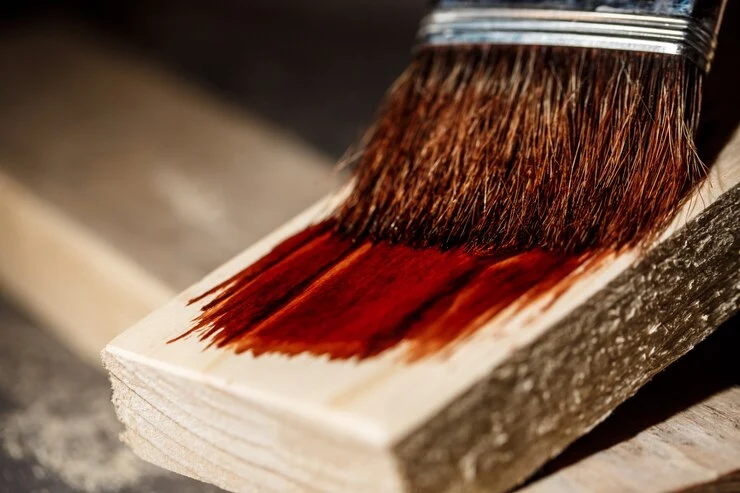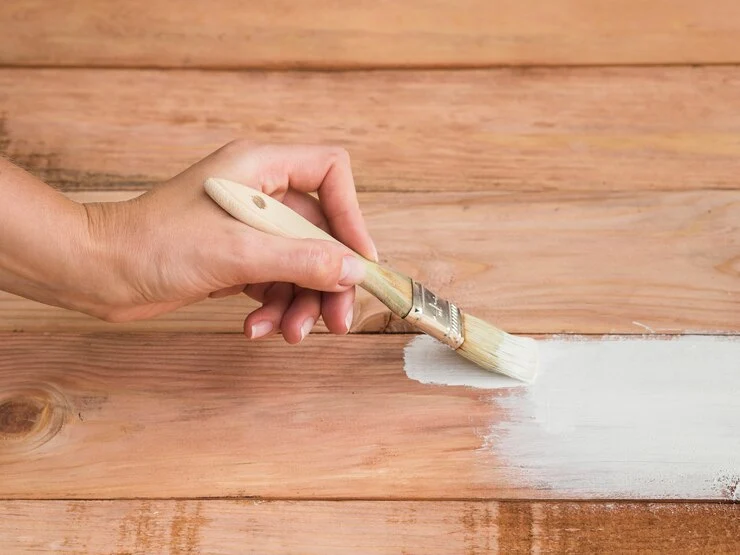Key Points
- Durability and Vibrancy: Oil-based paint ensures a long-lasting and vibrant finish on wood.
- Preparation is Crucial: Proper cleaning, sanding, and priming set the foundation for a flawless finish.
- Techniques and Maintenance: Applying thin coats, allowing proper drying, and regular care keep wood looking stunning.
Intro
Painting wood with oil-based paint is a timeless method that brings out the best in wooden surfaces. Renowned for its durability and vibrant finish, this approach has stood the test of time in both professional and DIY projects. Whether you are an experienced painter or just starting, this guide provides practical advice on preparation, application, and maintenance to achieve a stunning and long-lasting result. Follow these steps to transform your wood projects into masterpieces with ease and confidence.
Why Choose Oil-Based Paint for Wood?
Oil-based paint has long been a favorite among professionals and DIY enthusiasts alike. Here’s why it’s a great option for painting wood:
- Durability: Oil-based paints create a hard, durable surface that resists wear and tear, making it ideal for high-traffic areas and outdoor applications.
- Smooth Finish: These paints level out beautifully, providing a smooth and flawless finish that highlights the natural beauty of wood.
- Moisture Resistance: Oil-based paint forms a water-resistant barrier, protecting wood from moisture damage.
- Rich Color Retention: With their deep pigments, oil-based paints maintain vibrant colors longer than many water-based alternatives.
Tools and Materials You’ll Need
Before you begin, collect these tools and materials:
- Oil-based paint
- Paintbrushes (preferably natural bristle brushes for smooth application)
- Primer (oil-based or compatible with oil-based paint)
- Sandpaper (medium and fine grit)
- Tack cloth (to remove dust)
- Painter’s tape (to protect edges)
- Drop cloths (to cover nearby surfaces)
- Paint thinner or mineral spirits (to clean brushes and thin paint)
- Safety gear (gloves, mask, goggles)
Preparing the Wood Surface
Preparing is the most important step to achieve a professional finish. Follow these steps:
Clean the Wood
Clean the wood surface by removing dust, grease, or grime. Use mild detergent with water and let it dry completely.
Sand the Surface
- Start with medium-grit sandpaper to smooth rough areas and remove any old paint or varnish.
- Finish with fine-grit sandpaper for a silky surface.
- Always sand along the wood grain to prevent scratches.
Remove Dust
After sanding, wipe off the dust with a tack cloth. Dust can ruin the paint’s adhesion and finish.
Apply Primer
- Choose an oil-based primer that matches your paint. Primer seals the wood and provides a base for the paint.
- Apply a thin, even coat with a brush and let it dry completely (follow the manufacturer’s instructions).
- Sand lightly with fine-grit sandpaper after the primer dries, then wipe away dust with a tack cloth.
Choosing the Right Oil-Based Paint
Choosing the right paint is key to the success of your project. Consider the following:
- Gloss Level: Oil-based paints are available in various finishes, including matte, satin, semi-gloss, and high-gloss. Choose based on your desired look and the location of the painted wood.
- Color: Option for high-quality paint with rich pigments to achieve long-lasting and vibrant results.
- Intended Use: For outdoor projects, choose paint specifically designed for exterior use, which offers enhanced weather resistance.
How to Paint Wood with Oil-Based Paint?
Now comes the exciting part, applying the paint! Here’s how to do it:
Stir the Paint
Thoroughly stir the paint before use to ensure even distribution of pigments and a consistent finish.
Apply the First Coat
- Use a good quality natural bristle brush for the best results.
- Begin with thin coats, brushing along the wood grain.
- Avoid overloading your brush to prevent drips and uneven coverage.
Let It Dry
Oil-based paint dries slower than water-based paint. Let the first coat dry fully, usually for 24 hours.
Sand Between Coats
For a smooth finish, gently sand the surface with fine-grit sandpaper between coats. Use a tack cloth to wipe away any dust.
Apply Additional Coats
Repeat the process with additional coats until you achieve the desired coverage and finish. Two to three coats are usually enough.

Tips for a Flawless Finish
- Work in a Well-Ventilated Area: Oil-based paint fumes can be strong. Always paint in a well-ventilated space or outdoors.
- Use Painter’s Tape: Use painter’s tape to protect nearby surfaces and keep the edges clean.
- Avoid Rushing: Allow ample drying time between coats to avoid smudging or imperfections.
- Clean Brushes Properly: Clean your brushes with paint thinner or mineral spirits immediately after use to keep them in good condition.
Common Mistakes to Avoid
- Skipping Primer: Primer enhances paint adhesion and improves durability. Never skip this step.
- Applying Thick Coats: Thick coats can cause drips and uneven drying. Stick to thin, even layers.
- Ignoring Drying Times: Patience is essential when working with oil-based paint. Rushing can ruin the finish.
Maintaining Your Painted Wood
Once your project is complete, follow these tips to maintain its beauty:
- Regular Cleaning: Use a soft, damp cloth to wipe away dust and dirt from the surface.
- Avoid Harsh Cleaners: Use mild cleaning solutions to prevent damaging the paint.
- Inspect for Damage: Periodically check for chips or cracks and touch up as needed to protect the wood.
FAQs About Painting Wood with Oil-Based Paint
Can you paint wood with an oil-based paint?
Yes, oil-based paint is a good option for wood. It offers durability, a smooth finish, and long-lasting color.
How do you seal oil-based paint on wood?
To seal oil-based paint, you can apply a clear polyurethane or varnish once the paint is completely dry. This adds extra protection and enhances the finish.
What is the best oil-based paint for wood?
High-quality brands like Sherwin-Williams, Benjamin Moore, and Rust-Oleum offer some of the best oil-based paints for wood, known for their durability and rich colors.
Can I use oil-based paint on wood without priming first?
While it’s possible, priming is highly recommended to ensure better adhesion, smoother application, and a longer-lasting finish.
Which type of paint is better for wood: oil-based or water-based?
Oil-based paint is more durable and weather-resistant, making it ideal for exterior wood and high-traffic interior areas. Water-based paint, however, is easier to clean, quick-drying, and better for low-odor indoor applications.
Conclusion
Painting wood with oil-based paint is a rewarding process that delivers stunning, long-lasting results. By following the steps outlined in this guide, you can achieve a professional-quality finish that enhances the beauty and durability of your wooden surfaces. Whether you’re revamping furniture, painting trim, or tackling outdoor projects, oil-based paint is a versatile choice that won’t disappoint. So, collect your tools, work at your own pace, and enjoy the change!
